#History of O&039;Connell Street
Text
NOT NAMED AFTER A PRINCESS BUT AFTER TWO PRINCES -229573-1
Princes Street North, a historic gem off O'Connell Street, offers a fascinating blend of past and present for locals and visitors alike.
PRINCES STREET AS IT IS IN 2024
It should be noted that I have included, in this series of photographs, images of a narrow lane that connects North Princes Street to Middle Abbey Street as well as the GPO Arcade. The laneway is named William’s Lane and while many accounts claim that it is no longer shown on maps I checked Google Maps and it is identified. And while no one appears to know why it…

View On WordPress
#1916 rising#Apple#Art Deco Dublin#Dublin Architecture#Fotonique#GPO Arcade#History of O&039;Connell Street#Infomatique#iP{hone 12 Pro Max#Ireland#March 2024#Middle Abbey Street#North Princes Street#Princes Street Dublin#Streets Of Dublin#William Murphy#William&039;s Lane Dublin
0 notes
Text
#OTD in 1976 – Tens of thousands defied a ban on commemorating the heroes of Easter 1916 at the GPO in Dublin.
In 1976, the 60th anniversary of the Rising, the southern state and the republican paramilitaries – particularly the Provisional IRA were in frank confrontation.
The Irish government banned that year’s proposed Easter parade by republicans under the Offences Against the State Act – its anti-terrorist legislation. Just ten years after the state’s own bombastic commemoration of the Rising in 1966,…

View On WordPress
#1916 Easter Rising#60th Anniversary#Dublin#GPO#History#History of Ireland#Ireland#Irish History#O&039;Connell Street#Offences Against the State Act#Provisional Irish Republican Army#Stephen’s Green#The Irish Times
11 notes
·
View notes
Text
In order to understand the sectarian violence that plagued Belfast and Northern Ireland for many years, you have to start one hundred and three miles to the South in the city of Dublin. The conflict known as the troubles, involved mostly Protestant loyalists, who wanted to remain part of the United Kingdom, against mostly Catholic republicans, who wished to unite with the Republic of Ireland.
In 1916, on Easter Monday in Dublin, the Irish Republican Brotherhood, a secret organization of Irish nationalists led by Patrick Pearse, launches the Easter Rebellion, an armed uprising against British rule. Assisted by militant Irish socialists under James Connolly, Pearse and his fellow Republicans rioted and attacked British provincial government headquarters across Dublin and seized the Irish capital’s, General Post Office. Following these successes, the Irish nationalists proclaimed the independence of Ireland, which had been under the British rule for centuries, and by the next morning were in control of much of the city.
Later that day, however, British authorities launched a counteroffensive, and by April 29 the uprising had been crushed. Nevertheless, the Easter Rebellion is considered a significant marker on the road to establishing an independent Irish republic. Following the uprising, Pearse and 14 other nationalist leaders were executed for their participation and held up as martyrs by many in Ireland.
While walking on O’Connell Street in the Irish Capital of Dublin, one summer evening, I asked for directions to a ATM from a local resident. He gave me directions which to my surprise it was on the same block. While waiting on a cab, strangely he approached me and started to tell me about the Easter Rising and explained that evidence of the uprising was still on this street. He explained that the bullet holes on the angles on the O’Connell Monument were from the 1916 uprising. He informed us of the bullet holes in the are still in the side of the building of the General Post Office and told us the story of the Irish Mythological Hero of Cu Chulainn. It was amazing, I was getting a short Irish history lesson from an Irishman on the street who was very proud of his heritage and the hard-fought independence from the British. We walked over to the O’Connell monument to see what he was talking about. There were two teenagers sitting on the monument. They preceded to show us where the bullet holes were and explained to us about the uprising.
We walked over to the General Post Office building where it was the headquarters of the men and women who took part in the Easter Rising. Sure enough, there were bullet holes in the side of the building. It is hard to believe such a lively street filled with shops and restaurants was a war zone a little over hundred years ago with evidence still around.
The Irish Nationalist chose the General Post Office (GPO), the communications heart of the country and the centre of Dublin city, as the building on which to hoist the flag of an Irish republic. For nearly a week, the rebels held the GPO. Fighting here and in other parts of the city was intense with civilians bearing the greatest hardship. With the building on fire and crumbling, they tried to break through the surrounding army cordon but failed. Patrick Pearse, realizing the futility of further fighting, took the decision to surrender.
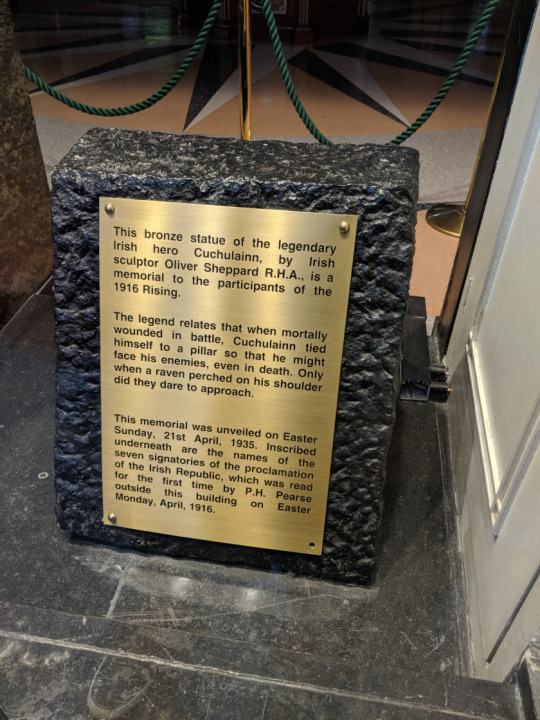
If you take the time to walk around Dublin you will see evidence of the hardship and sacrifice the Irish have endured achieving their independence. The Easter Rising was notable for its sniper duels. It was a way of picking off combatants who strayed into sight, although sometimes targets were picked indiscriminately. For the rebels, it was essential to their survival that enemy snipers and machine gun nests were disrupted and forced to move position.
The picture below was taken from inside of the Dublinia Museum that highlighted the Viking and Midevive history of Dublin. In 1916, Dublinia (then the Synod Hall) was one of the outposts used in the Rising. Three armed rebels from the socialist Irish Citizens Army (ICA) were stationed here. Their task was to delay expected British troops heading to Dublin Castle where they had planned a take-over.

The Anglo-Irish treaty was signed in 1921 ending hostilities between the IRA and the British. The Treaty gave the 26 southern counties of Ireland now the Irish Free State a considerable degree of independence, however, Northern Ireland would remain part of the United Kingdom. Some were not happy with the arrangement. A civil war broke out between pro-treaty forces and anti-Treatyites, or republicans. T The war ended in 1924, but tensions would still carry on over the years. As you look toward the North, it is apparent even today there is still desire for a united Ireland.

A Walk Through Belfast’s Troubled Past: The Dublin Connection In order to understand the sectarian violence that plagued Belfast and Northern Ireland for many years, you have to start one hundred and three miles to the South in the city of Dublin.
0 notes
Text
The Garden of Remembrance
This beautiful, peaceful large sunken garden in the heart of Dublin city was designed by Dáithí Hanly and dedicated to the memory of all who gave their lives in the cause of Irish Freedom. It features a pool in the shape of a non-denominational cross designed to be inclusive of all religions, creeds or colours.
The large sculpture by Oisín Kelly is based on the theme of the ‘Children of Lir’,…

View On WordPress
#1798 United Irishmen Rebellion#1803 rebellion of Robert Emmet#1867 rising of the Fenian Brotherhood#1916 Easter Rising#Éamon De Valera#Dáithí Hanly#Dublin#History#History of Ireland#Ireland#Irish History#Irish War of Independence#James Larkin#O&039;Connell Street#Oisín Kelly#Parnell Square#The Garden of Remembrance
9 notes
·
View notes
Text
#OTD in 1966 – Nelson’s Pillar in Dublin is blown up.
Nelson’s Pillar was erected in O’Connell St, Dublin in 1809 to honour the exploits of the British naval hero and notorious adulterer Vice-Admiral Horatio Nelson who was killed at the Battle of Trafalgar in 1805. The 134ft high monument became an integral part of the city, central to the country’s historic and literary epics, as well as being the meeting place for friends and lovers; it also…
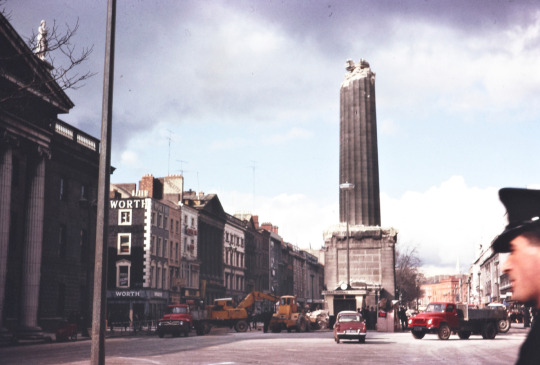
View On WordPress
#1916 Easter Rising 50th Anniversary#Bombing#British#Dublin#England#History of Ireland#IRA#Ireland#Irish History#Nelson&039;s Pillar#O&039;Connell Street#Up Went Nelson#Vice-Admiral Horatio Nelson
7 notes
·
View notes
Text
The Garden of Remembrance
This beautiful, peaceful large sunken garden in the heart of Dublin city was designed by Dáithí Hanly and dedicated to the memory of all who gave their lives in the cause of Irish Freedom. It features a pool in the shape of a non-denominational cross designed to be inclusive of all religions, creeds or colours.
The large sculpture by Oisín Kelly is based on the theme of the ‘Children of Lir’,…

View On WordPress
#1798 United Irishmen Rebellion#1803 rebellion of Robert Emmet#1867 rising of the Fenian Brotherhood#1916 Easter Rising#Éamon De Valera#Dáithí Hanly#Dublin#History#History of Ireland#Ireland#Irish History#Irish War of Independence#James Larkin#O&039;Connell Street#Oisín Kelly#Parnell Square#The Garden of Remembrance
14 notes
·
View notes
Text
#OTD in 1922 – A leading figure in the Anti-Treaty IRA who had refused to surrender, Cathal Brugha, appeared from the doorway of the Hammam Hotel, revolver in each hand, and was hit by a sniper’s bullet from the Findlater’s building. He would die two days later.
During the Battle of Dublin, Republican leader Cathal Brugha and a rearguard of 15 men, who stayed behind in the Hammam hotel after Oscar Trayner and most other IRA men had left. At 5.00pm, when the fires made the hotel untenable, Brugha ordered his men to surrender. He however, stayed behind, only to emerge from the building alone, armed with a revolver. The instructions from the Free State…
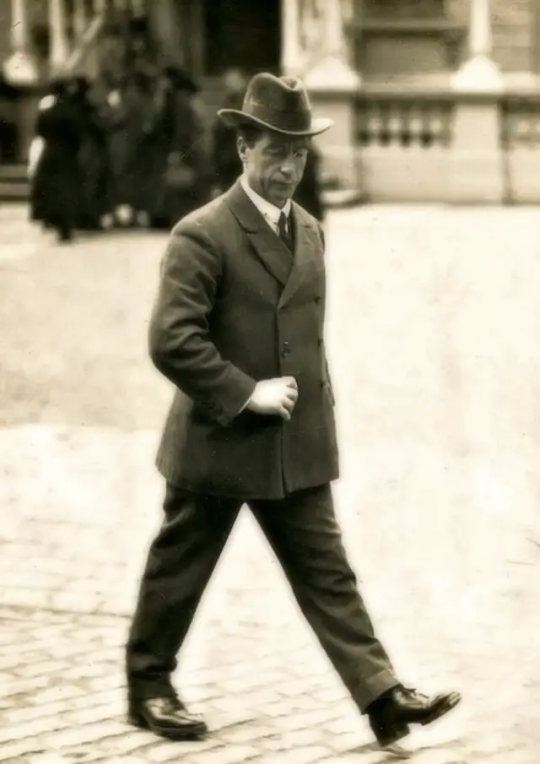
View On WordPress
#Anglo-Irish Treaty#Anti-Treaty IRA#Battle of Dublin#Cathal Brugha#Free State troops#Gresham Hotel#Hammam Hotel#Ireland#Irish Civil War#Irish History#O&039;Connell Street#Oscar Traynor
6 notes
·
View notes
Text
#OTD in 1911 – Statue of Charles Stewart Parnell is unveiled in Dublin.
Charles Stewart Parnell was one of the most significant political figures in Ireland during the second half of the 19th century. As leader of the Home Rule Party, he made a notable contribution to the progress towards national self-determination and he also played an important role in the Land War in post-Greater Hunger Ireland. His fall in 1890 split the party but there was still a huge…
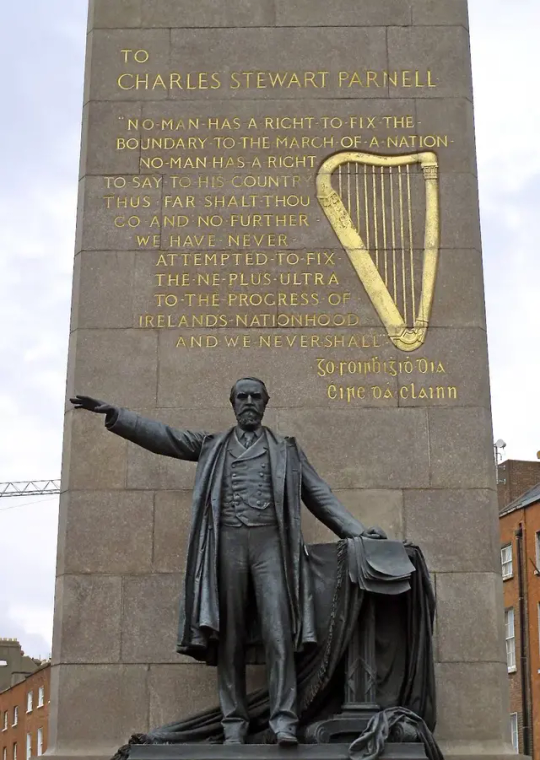
View On WordPress
#Augustus Saint Gardens#Charles Stewart Parnell#Dublin#History#History of Ireland#Home Rule Party#Ireland#Irish History#O&039;Connell Street
5 notes
·
View notes
Text
The Garden of Remembrance
The Garden of Remembrance
This beautiful, peaceful large sunken garden in the heart of Dublin city was designed by Dáithí Hanly and dedicated to the memory of all who gave their lives in the cause of Irish Freedom. It features a pool in the shape of a non-denominational cross designed to be inclusive of all religions, creeds or colours.
The large sculpture by Oisín Kelly is based on the theme of the ‘Children of Lir’,…
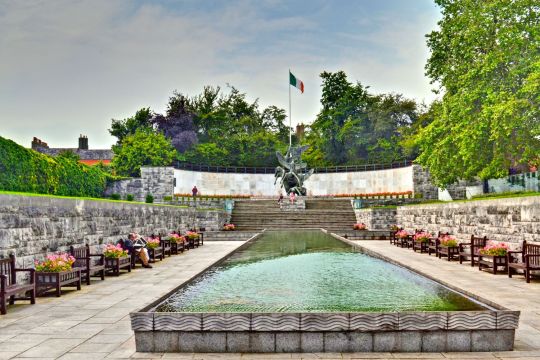
View On WordPress
#1798 United Irishmen Rebellion#1803 rebellion of Robert Emmet#1867 rising of the Fenian Brotherhood#1916 Easter Rising#Éamon De Valera#Dáithí Hanly#Dublin#History#History of Ireland#Ireland#Irish History#Irish War of Independence#James Larkin#O&039;Connell Street#Oisín Kelly#Parnell Square#The Garden of Remembrance
10 notes
·
View notes
Text
#OTD in 1911 – Statue of Charles Stewart Parnell is unveiled in Dublin.
#OTD in 1911 – Statue of Charles Stewart Parnell is unveiled in Dublin.
Charles Stewart Parnell was one of the most significant political figures in Ireland during the second half of the 19th century. As leader of the Home Rule Party, he made a notable contribution to the progress towards national self-determination and he also played an important role in the Land War in post-Greater Hunger Ireland. His fall in 1890 split the party but there was still a huge…

View On WordPress
#Augustus Saint Gardens#Charles Stewart Parnell#Dublin#History#History of Ireland#Home Rule Party#Ireland#Irish History#O&039;Connell Street
5 notes
·
View notes
Text
#OTD in 1922 – A leading figure in the Anti-Treaty IRA who had refused to surrender, Cathal Brugha, appeared from the doorway of the Hammam Hotel, revolver in each hand, and was hit by a sniper’s bullet from the Findlater’s building. He would die two days later.
#OTD in 1922 – A leading figure in the Anti-Treaty IRA who had refused to surrender, Cathal Brugha, appeared from the doorway of the Hammam Hotel, revolver in each hand, and was hit by a sniper’s bullet from the Findlater’s building. He would die two days later.
During the Battle of Dublin, Republican leader Cathal Brugha and a rearguard of 15 men, who stayed behind in the Hammam hotel after Oscar Trayner and most other IRA men had left. At 5.00pm, when the fires made the hotel untenable, Brugha ordered his men to surrender. He however, stayed behind, only to emerge from the building alone, armed with a revolver. The instructions from the Free State…
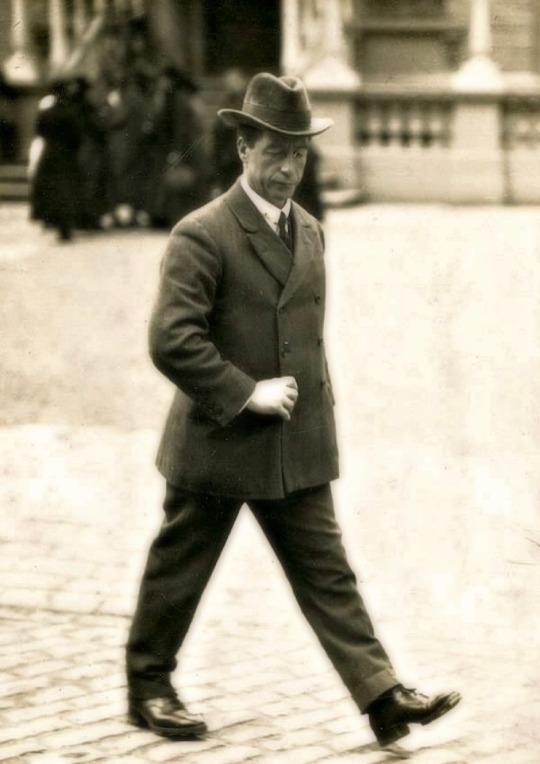
View On WordPress
#Anglo-Irish Treaty#Anti-Treaty IRA#Battle of Dublin#Cathal Brugha#Free State troops#Gresham Hotel#Hammam Hotel#Ireland#Irish Civil War#Irish History#O&039;Connell Street#Oscar Traynor
3 notes
·
View notes
Text
#OTD in 1976 – Tens of thousands defied a ban on commemorating the heroes of Easter 1916 at the GPO in Dublin.
#OTD in 1976 – Tens of thousands defied a ban on commemorating the heroes of Easter 1916 at the GPO in Dublin.
In 1976, the 60th anniversary of the Rising, the southern state and the republican paramilitaries – particularly the Provisional IRA were in frank confrontation.
The Irish government banned that year’s proposed Easter parade by republicans under the Offences Against the State Act – its anti-terrorist legislation. Just ten years after the state’s own bombastic commemoration of the Rising in 1966,…
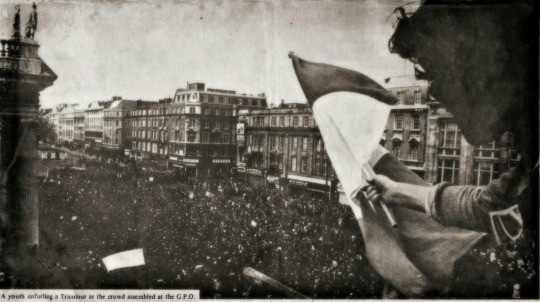
View On WordPress
#1916 Easter Rising#60th Anniversary#Dublin#GPO#History#History of Ireland#Ireland#Irish History#O&039;Connell Street#Offences Against the State Act#Provisional Irish Republican Army#Stephen’s Green#The Irish Times
10 notes
·
View notes
Text
The Garden of Remembrance
The Garden of Remembrance
This beautiful, peaceful large sunken garden in the heart of Dublin city was designed by Dáithí Hanly and dedicated to the memory of all who gave their lives in the cause of Irish Freedom. It features a pool in the shape of a non-denominational cross designed to be inclusive of all religions, creeds or colours.
The large sculpture by Oisín Kelly is based on the theme of the ‘Children of Lir’,…

View On WordPress
#1798 United Irishmen Rebellion#1803 rebellion of Robert Emmet#1867 rising of the Fenian Brotherhood#1916 Easter Rising#Éamon De Valera#Dáithí Hanly#Dublin#History#History of Ireland#Ireland#Irish History#Irish War of Independence#James Larkin#O&039;Connell Street#Oisín Kelly#Parnell Square#The Garden of Remembrance
16 notes
·
View notes
Text
#OTD in 1911 – Statue of Charles Stewart Parnell is unveiled in Dublin.
#OTD in 1911 – Statue of Charles Stewart Parnell is unveiled in Dublin.
Charles Stewart Parnell was one of the most significant political figures in Ireland during the second half of the 19th century. As leader of the Home Rule Party, he made a notable contribution to the progress towards national self-determination and he also played an important role in the Land War in post-Greater Hunger Ireland. His fall in 1890 split the party but there was still a huge…
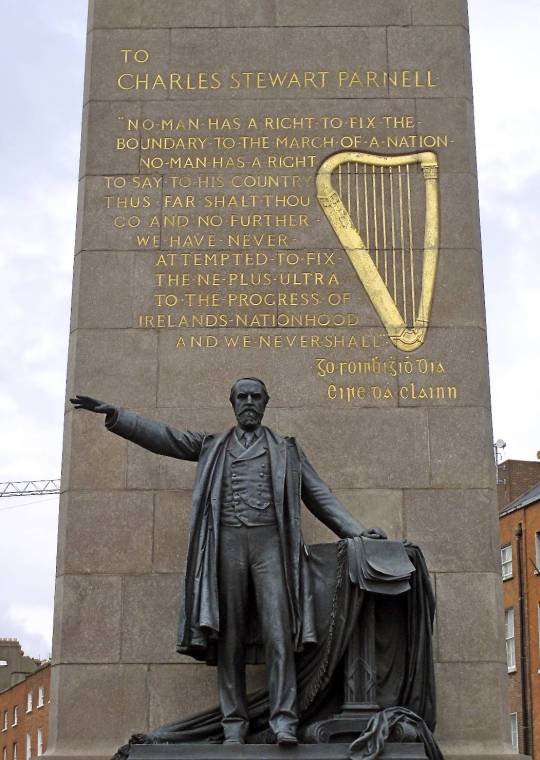
View On WordPress
#Augustus Saint Gardens#Charles Stewart Parnell#Dublin#History#History of Ireland#Home Rule Party#Ireland#Irish History#O&039;Connell Street
8 notes
·
View notes
Text
The Garden of Remembrance
The Garden of Remembrance
This beautiful, peaceful large sunken garden in the heart of Dublin city was designed by Dáithí Hanly and dedicated to the memory of all who gave their lives in the cause of Irish Freedom. It features a pool in the shape of a non-denominational cross designed to be inclusive of all religions, creeds or colours.
The large sculpture by Oisín Kelly is based on the theme of the ‘Children of Lir’,…
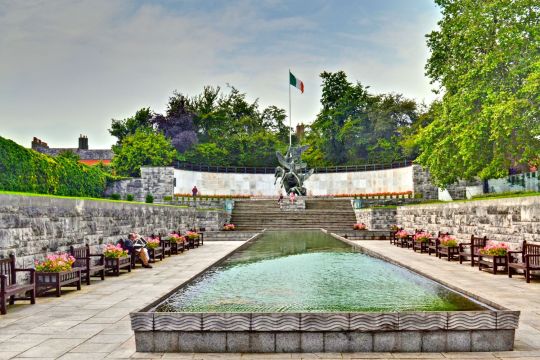
View On WordPress
#1798 United Irishmen Rebellion#1803 rebellion of Robert Emmet#1867 rising of the Fenian Brotherhood#1916 Easter Rising#Éamon De Valera#Dáithí Hanly#Dublin#History#History of Ireland#Ireland#Irish History#Irish War of Independence#James Larkin#O&039;Connell Street#Oisín Kelly#Parnell Square#The Garden of Remembrance
6 notes
·
View notes
Text
#OTD in 1966 – Nelson’s Pillar in Dublin is blown up.
#OTD in 1966 – Nelson’s Pillar in Dublin is blown up.
Nelson’s Pillar was erected in O’Connell St, Dublin in 1809 to honour the exploits of the British naval hero and notorious adulterer Vice-Admiral Horatio Nelson who was killed at the Battle of Trafalgar in 1805. The 134ft high monument became an integral part of the city, central to the country’s historic and literary epics, as well as being the meeting place for friends and lovers; it also…
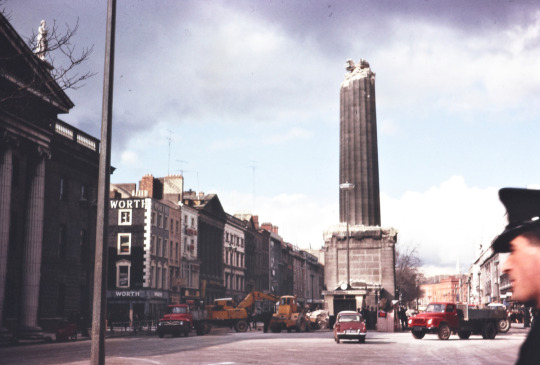
View On WordPress
#1916 Easter Rising 50th Anniversary#Bombing#British#Dublin#England#History of Ireland#IRA#Ireland#Irish History#Nelson&039;s Pillar#O&039;Connell Street#Up Went Nelson#Vice-Admiral Horatio Nelson
5 notes
·
View notes